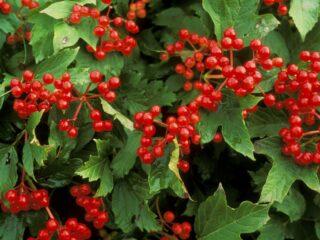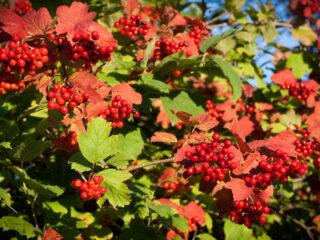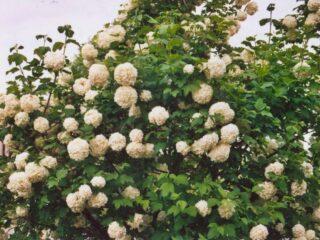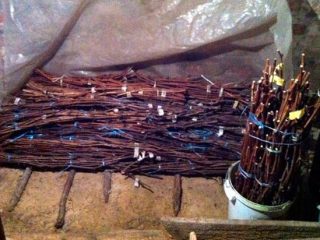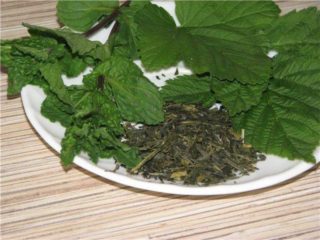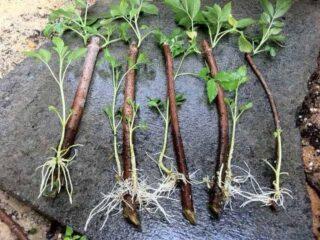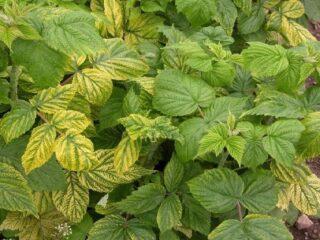Content
Viburnum is popular among gardeners due to its combination of ease of care, aesthetic flowering and the demand for its fruits in folk medicine. However, the decorativeness and productivity of the bush are noticeably reduced if the place for it is chosen randomly, without taking into account the “requirements” of the plant. To correct the situation, it is enough to replant the viburnum, finding a suitable site for it, properly preparing the hole and providing the plant with competent care for the time necessary for adaptation.
When is it better to transplant viburnum to another place?
Viburnum's hardiness includes cold resistance, so its successful replanting in the fall is possible even in moderate and more severe climates.
This option has many advantages:
- The plant, already close to a dormant state, practically does not react to “stress”.
- The substrate warms up well over the summer, which contributes to the formation of new roots and strengthening of existing ones.
- Autumn rains ensure “shrinkage” of the soil in the planting hole; its compaction is an additional protection from frost after replanting.
- Caring for viburnum in the fall is kept to a minimum.If you postpone the procedure to spring, you will have to monitor the condition of the bush throughout the season.
- Having successfully survived the first winter after transplanting in the fall, the viburnum actively begins to grow in the spring and forms new shoots. The experience of gardeners shows that in the future such specimens are more “stress-resistant”.
The main disadvantage of transplanting viburnum in autumn is the possible risk of the bush dying from frost, especially if the procedure is carried out incorrectly. In addition, plants can be seriously damaged by rodents.
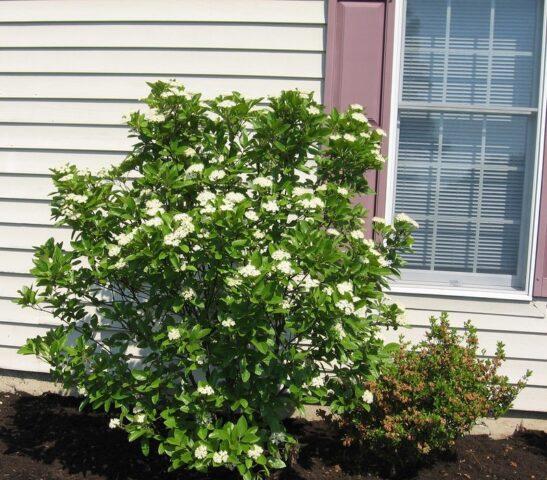
An initially poorly chosen place for viburnum is the most common reason for replanting it.
Is it possible to transplant viburnum in the summer, in July?
Unlike most garden crops (both fruit-bearing and ornamental), viburnum can tolerate transplantation in the summer. Of course, the yield in the current and next season will greatly decrease, but there will be no other negative consequences if the necessary preparation and the procedure itself are carried out correctly.
However, summer transplanting for viburnum is rather an “emergency” option. You must immediately take into account that during the season the condition of the plant will have to be constantly monitored. It will require increased doses of fertilizing, frequent watering, and will become more susceptible to diseases and pests. The hotter and drier the summer, the longer and worse the viburnum takes root in a new place after transplantation.
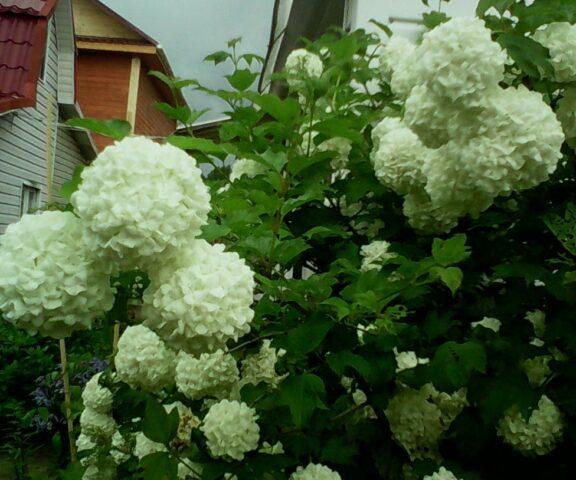
Viburnum can be transplanted throughout the summer, including during the flowering period.
How to properly transplant a viburnum bush to a new place in the fall
Transplanting viburnum to a new location in the fall does not have any distinctive features depending on the region where it is grown. The only important nuance is the need for more careful shelter for the winter where severe frosts and lack of snow are predicted.
Seedling preparation
To remove viburnum from the soil for replanting, its shoots need to be tied for greater compactness. The bush is dug around the perimeter, focusing on the diameter of the crown. Then it is carefully “loosened” and taken out of the hole along with a lump of earth on the roots.
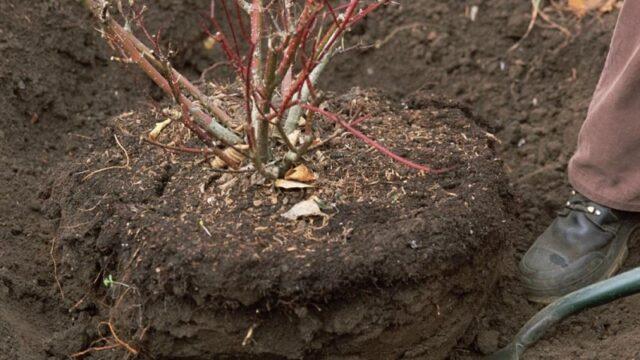
It will be easier to dig up a bush if you water the plant first
In young (2-3 years old) viburnum seedlings, before transplanting, wash off the soil from the roots, inspect them, and, if necessary, cut off dead or rotted tissue, disinfecting the resulting “wounds” with a fungicide. It is also recommended to soak them in a biostimulator solution for several hours.
It is more convenient to transplant adult viburnum using the transshipment method. The plant, along with a lump of soil on the roots, is transported to a new hole on a sheet of polycarbonate, durable plastic, or a piece of tarpaulin.
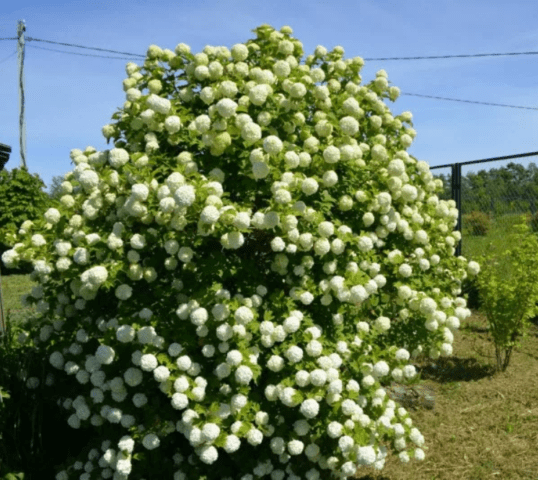
It is impossible to preserve the entire root system when removing large specimens from the soil, but this is not critical for them
To make it easier for the viburnum to adapt to a new place after transplantation, pruning is carried out:
- In young plants, all shoots are cut off to the growth point. Only 2-4 of the most powerful, developed and well located branches are left. Their height should be limited to 70-80 cm.
- In an adult bush, the crown is “unloaded” to the maximum, carrying out thorough sanitary pruning and getting rid of root shoots. It is also recommended to remove 1-2 skeletal branches if there are suitable “replacement shoots”.
- If viburnum is grown as a standard tree, before replanting it is necessary not only to carry out sanitary pruning, but also to get rid of all the growth on the trunk up to the lower fork.
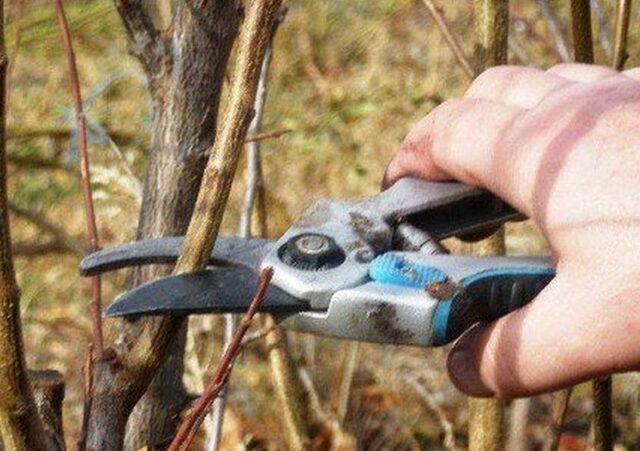
Pruning viburnum before transplanting reduces the load on the root system, increasing the plant’s chances of adapting to a new location.
Requirements and preparation of the site and soil
It is necessary to replant viburnum (red and its other varieties), taking into account the cultural requirements for growing conditions:
- An open place, protected from direct sunlight during the hottest time of day. Viburnum is light-loving, but does not tolerate drought, even short-term. In dense shade, the development of the plant is greatly inhibited; it blooms and bears fruit sparingly.
- A highly nutritious substrate, quite loose, eliminating moisture stagnation, with an acid-base balance close to neutral or slightly acidic (5.5-6.5). Areas with “poor” (sandy, rocky) or “heavy” (silty, peaty) soil are not suitable for transplanting viburnum.
- Lack of groundwater coming close to the surface of the earth. The permissible minimum in areas suitable for transplanting viburnum is 1 m.
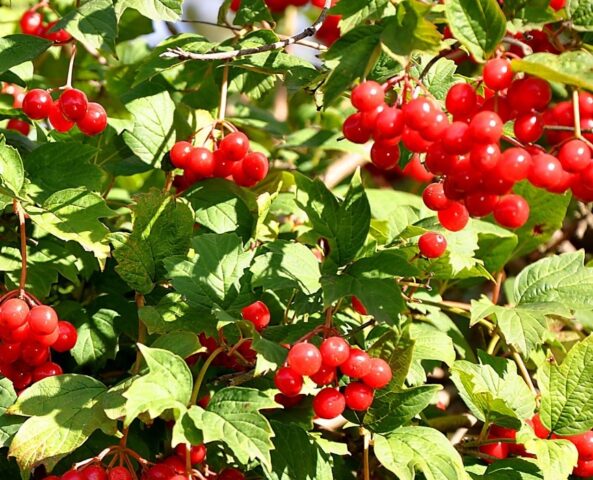
For the ripening of fruits and abundant flowering of viburnum, warmth and light are needed.
The area chosen for transplanting viburnum is cleared of weeds, other plant and other debris. The diameter and depth of the planting hole depend on the size of the clod of earth on the roots of the plant. Usually 50-60 cm is enough for young seedlings, 75-80 cm for adult bushes.
Any drainage material is poured into a thick layer at the bottom of the hole. The fertile turf extracted from it is mixed with humus in approximately equal volumes and any complex fertilizer (80-120 g) is added. If you plan to transplant viburnum in the fall, it should not contain nitrogen - it activates the process of growing green mass, which interferes with normal preparation for winter. Dolomite flour, slaked lime, crushed chalk are additionally added to acidified soil; peat, fresh pine needles or sawdust from coniferous trees are added to alkaline soil.
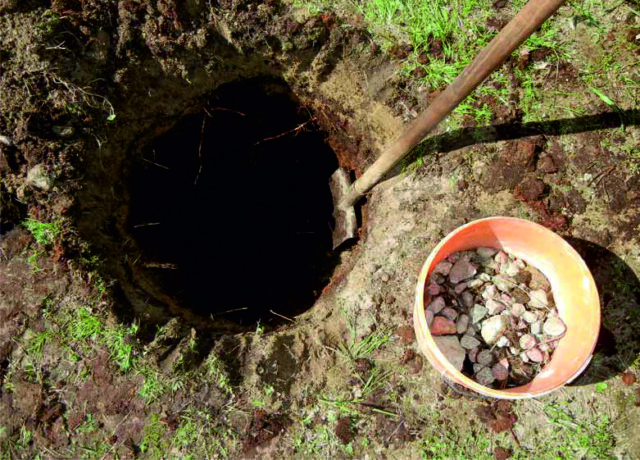
Drainage prevents water from stagnating at the roots after transplanting viburnum
The pit for transplanting viburnum should be filled with soil about half. The substrate is raked up and allowed to “sit” for at least two weeks, covering it on top so that the soil is not washed away by rain.
Transplanting viburnum to a new place in the fall
2-3 hours before transplanting the viburnum, the soil at the bottom of the pit is watered abundantly (20-30 l) and loosened well. Next you need to follow the standard algorithm:
- If the plant is replanted with a lump of soil on its roots, make a depression in the soil at the bottom of the hole, approximately corresponding to its dimensions. When the root system is open, save a “mound” of soil.
- Place the earthen ball in the hole, and the bare-rooted seedling on the top of the “hill.” Carefully guide them along the “slopes”, preventing them from bending up and to the sides.
- Use small portions of soil to fill the remaining free space in the planting hole. Periodically, the soil must be compacted manually so that there are no air pockets left in it.
- Having filled the entire hole, assess the position of the root collar. When transplanting viburnum, it should not be buried deeper than in its original place. Otherwise, its rotting and death of the bush is inevitable.
- Form an earthen “side” about 10 cm high, enclosing a circle with a diameter of 0.8-1 m. Water the plant generously (30-40 l).
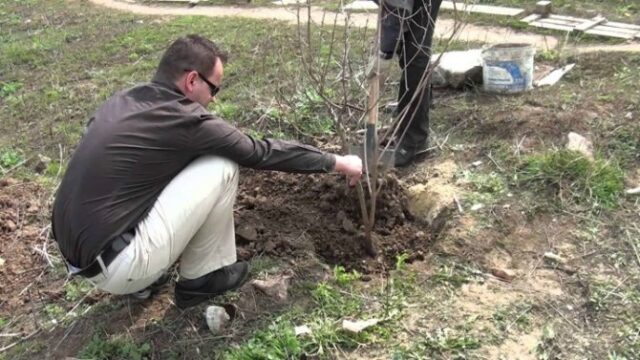
It is more convenient to replant viburnum together
Immediately after transplanting the viburnum, it is recommended to mulch the tree trunk. In winter, this will provide additional protection from frost, in summer - from overheating of the roots, too rapid evaporation of moisture from the soil and its “sintering” into an airtight crust.
Caring for the seedling after transplantation
After transplantation in spring or summer, caring for viburnum includes:
- Watering. Viburnum is not drought-resistant; after transplanting, it is especially sensitive to soil moisture. To prevent the soil from drying out, the bush is watered every 5-7 days, using 30-60 liters of water.
- Feeding. When leaf buds turn into “green cones,” a mineral nitrogen-containing fertilizer is applied. In the budding phase, during flowering and around mid-autumn, viburnum needs complex products for ornamental shrubs.If the plant clearly slows down in development in the first season after transplantation, fertilizing is repeated monthly. You can alternate store-bought fertilizers with natural organics and folk remedies.
- Loosening and weeding. Necessary only if, after transplanting the viburnum, the tree trunk circle is not mulched.
- Measures to protect against diseases and pests. You can’t expect a bountiful harvest the next season after transplanting viburnum, so the use of any insecticides and fungicides is acceptable. Preventive treatments are carried out once every 4-5 weeks, spraying the plant itself and the substrate in the circle around the trunk.
- Trimming. In the fall of the next season, after transplanting the viburnum, it is recommended to limit yourself to sanitary pruning, postponing the formation of the bush until spring.

In the future, mulch will help save time on loosening and weeding the viburnum tree trunk
When transplanting in the fall, caring for viburnum is limited to careful preparation for winter. The plant does not need watering, fertilizing, or preventive measures to protect against diseases and pests.
The base of the bush is covered with humus or peat chips, creating a “mound” 15-20 cm high. The shoots are tied, if possible, so that the viburnum becomes more compact, and wrapped with 2-3 layers of breathable covering material or burlap. As soon as enough snow falls, it is thrown around the tree trunk, providing additional thermal insulation. During the winter it needs to be loosened several times, breaking the hard crust on the surface.
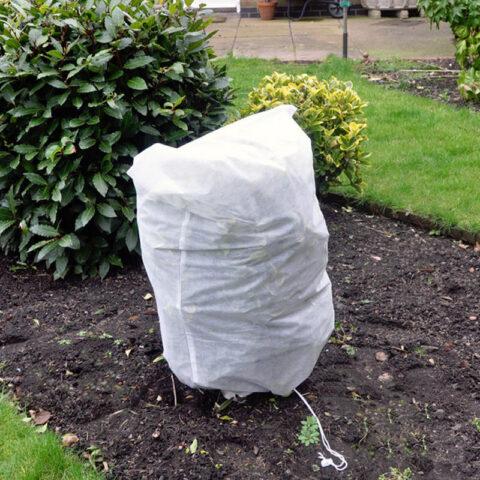
Small viburnum seedlings can be “packed” in special cases in the first winter after transplantation
Conclusion
As a rule, even inexperienced gardeners do not have any difficulties replanting viburnum - the procedure follows a standard algorithm for any ornamental or berry shrub. However, despite the unpretentiousness of the plant, you cannot expect bright flowering and abundant harvests from it if you choose the wrong time and place for replanting and do not provide the viburnum with proper care for the near future.
